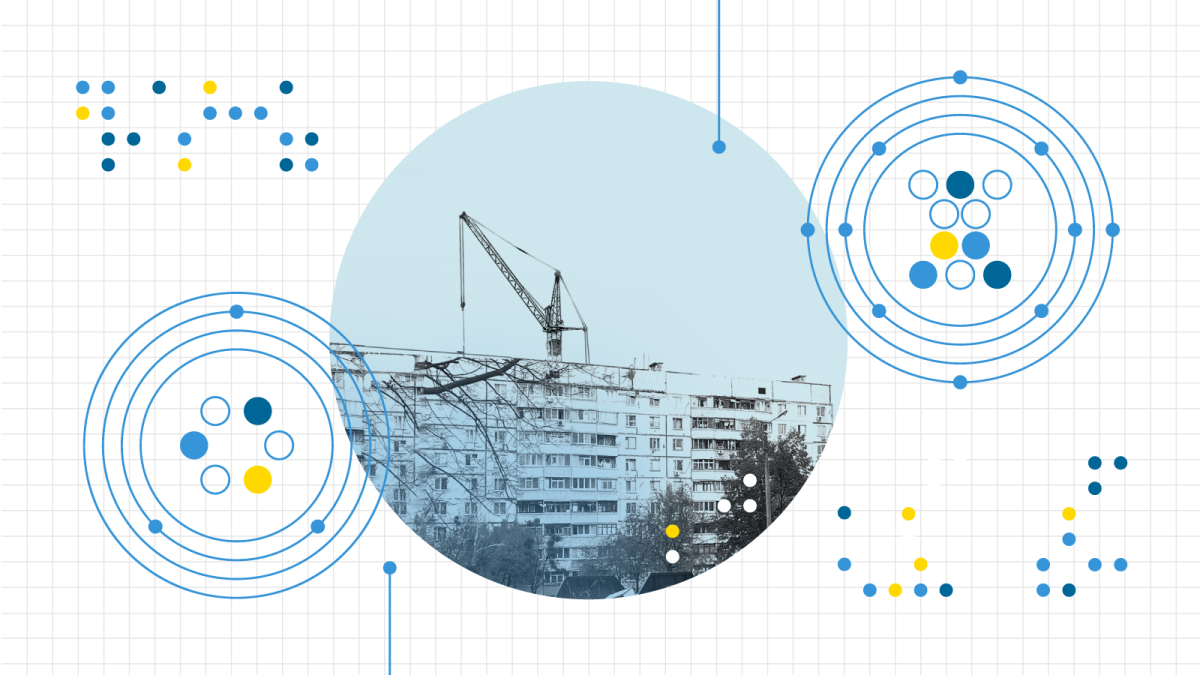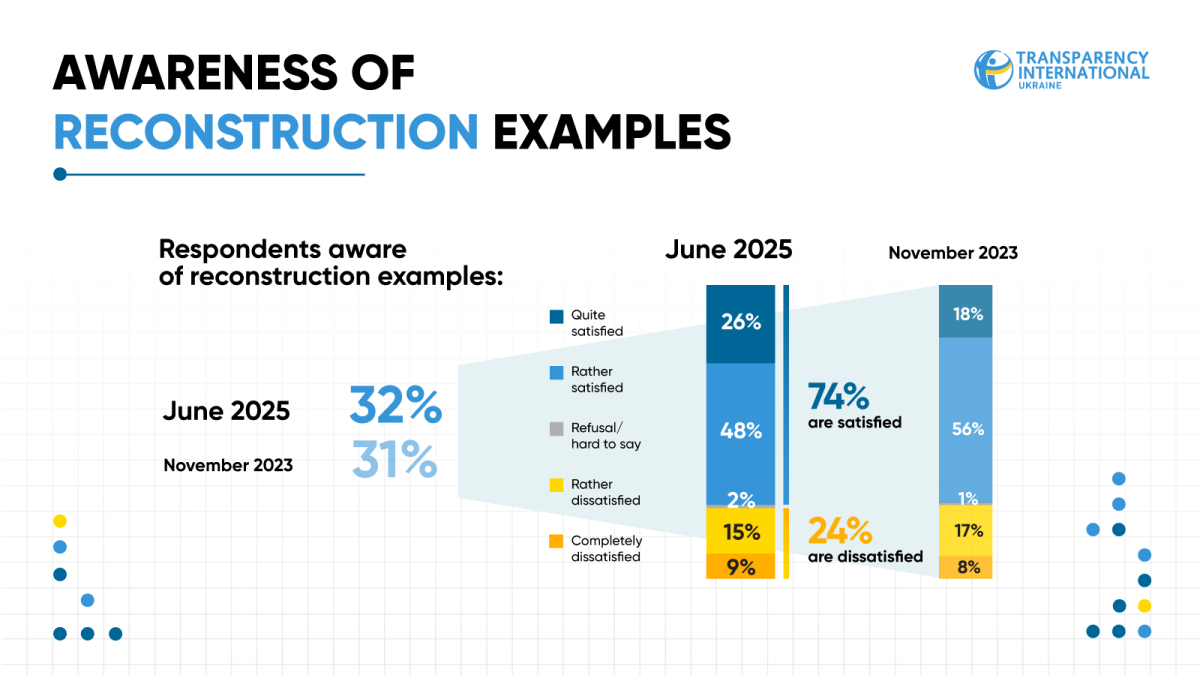

The current state of reconstruction satisfies 40% of Ukrainians, and more than a third have already seen the results of recovery projects. At the same time, corruption in future reconstruction remains one of the public’s greatest concerns.
These findings were presented by Transparency International Ukraine in the third wave of a sociological survey. This is the first part of a large-scale public opinion poll of Ukrainians, conducted by the research agency Info Sapiens at the request of Transparency International Ukraine, on corruption, reconstruction, and European integration.
According to the survey, one in three adult Ukrainians knows of or has personally seen examples of completed reconstruction. Among them, the vast majority (74%) are satisfied with the results.
The most visible reconstruction processes are in Kyiv (50% of respondents pointed to this), in the East (42%), and in the South (41%). By contrast, in the West and Center, the figures are significantly lower — 24% and 23% respectively.
When it comes to financing reconstruction, respondents believe the greatest role has been played by Ukrainian authorities: 55% say that recovery projects are implemented thanks to local self-government bodies, and 20% — thanks to central executive authorities. Ukrainians also highlight the significant contribution of the international community (40%), as well as volunteers and civil society (27%).
Every fifth Ukrainian has property damaged by the war. The highest share of affected people is in Eastern Ukraine — 60% report losses there — while the lowest is in the West, at 7%. In terms of damaged property, real estate accounts for the greatest losses, mentioned by 17% of Ukrainians.
The total value of damages is estimated by victims as follows: up to UAH 50,000 — 23%, UAH 51,000–300,000 — 19%, more than UAH 300,000 — 32%, with 10% of respondents reporting damages exceeding UAH 3 million.
Notably, compared with November 2023, the share of respondents with the smallest losses (up to UAH 100,000) has declined, while the number of Ukrainians with losses above UAH 300,000 has increased.
As in autumn 2023, most of those affected have not applied for compensation, citing the state’s more urgent wartime priorities (35%), while one in four among those who did not apply said they did not believe they would receive it. Among the 40% of affected citizens who did apply for compensation, 33% have already received it.
“The findings show that reconstruction is visible to a significant share of Ukrainians, and most of those who have seen the results assess them positively. At the same time, during the war, Ukrainians prioritize projects that ensure a tolerable standard of living. But above all, these projects must be implemented without abuses or loss of trust. For citizens today, it is crucial not only to rebuild what has been destroyed but also to do so without corruption and embezzlement,” summarized Anastasiia Mazurok, Chief Operating Officer of Transparency International Ukraine.
Sixty-five percent of respondents consider corruption in reconstruction processes to be widespread or rather widespread. The stages deemed most vulnerable to corruption by two-thirds of respondents are the distribution of international and budget funds (65%), monitoring and reporting on resource use (63%), and tendering (61%).
As in March 2023, when asked to choose between different planning horizons for reconstruction, most Ukrainians lean towards decisions promising the fastest results and focusing on reconstruction here and now.
A positive sign is the relative decline in fears and concerns about reconstruction — levels have dropped by 7 to 17 percentage points across almost all categories. The most common concerns remain lack of proper oversight (62%) and the possible return of corrupt schemes (61%). Meanwhile, 56% are worried about lack of security guarantees and renewed hostilities.
The study, conducted in June–July 2025, is a nationally representative survey of Ukraine’s adult population (aged 18 and over). The sample size of the current wave is 1,015 respondents. The sample is representative by gender, age, type and size of settlement, and macro-region within government-controlled territories of Ukraine. Data collection method — Computer Assisted Telephone Interview (CATI).
This is the third wave of sociological research on Ukrainians’ perception of reconstruction. The previous surveys on this topic were presented by TI Ukraine in June and December 2023.
This publication was prepared by Transparency International Ukraine with the financial support of Sweden.
The findings show that reconstruction is visible to a significant share of Ukrainians, and most of those who have seen the results assess them positively. At the same time, during the war, Ukrainians prioritize projects that ensure a tolerable standard of living. But above all, these projects must be implemented without abuses or loss of trust.
Anastasiia Mazurok









